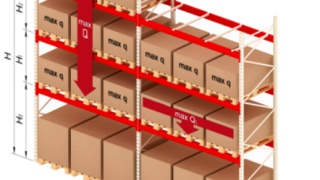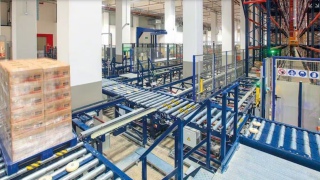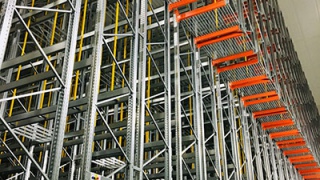❄️ Cold Storage Warehouses Explained: Types, Equipment & Use Cases
In an era driven by fresh produce, pharmaceutical integrity, and global trade, cold storage warehouses have become the silent backbone of supply chains worldwide. Designed to store temperature-sensitive goods, these facilities are evolving rapidly — integrating advanced technologies and adapting to changing consumer demands.

Let’s unpack what cold storage warehouses are, explore their types, highlight essential equipment, and examine key use cases.
What Is a Cold Storage Warehouse?
A cold storage warehouse is a temperature-controlled facility used to store perishable products at specific conditions to extend their shelf life and maintain quality. This includes items like fruits and vegetables, dairy, seafood, meat, vaccines, and even cosmetics.
Temperatures in these warehouses typically range from:
-
Ambient (10–20°C): For goods needing cool, dry conditions.
-
Chilled (0–10°C): Common for dairy, beverages, and ready meals.
-
Frozen (-18°C and below): Required for meat, seafood, and ice cream.
-
Ultra-low (-40°C or lower): For specialized pharmaceuticals and biotech products.
Types of Cold Storage Warehouses
Cold storage facilities come in various configurations depending on the industry and logistics requirements:
1. Dedicated Cold Warehouses
Fully refrigerated buildings used exclusively for chilled/frozen goods. These offer high-capacity storage and robust insulation.
2. Multi-Temperature Warehouses
Partitioned zones to accommodate products at varying temperature requirements. Ideal for distributors handling diverse inventory.
3. Blast Freezer Warehouses
Designed for rapid freezing of items — common in seafood and poultry industries before long-distance shipping.
4. Automated Cold Storage
Uses robotics and AI to handle goods with minimal human exposure to extreme cold. Increases safety and reduces labor costs.
5. Mobile Refrigerated Containers
Ideal for seasonal demand or remote areas, these containerized units offer flexible cooling wherever needed.
⚙️ Key Equipment Found in Cold Warehouses
Maintaining optimal storage conditions requires reliable and often specialized equipment:
-
Refrigeration Units: Industrial compressors and evaporators maintain temperature.
-
Insulated Doors & Panels: Minimize thermal exchange and energy loss.
-
Racking Systems: Galvanized, corrosion-resistant racks designed to withstand cold environments.
-
Temperature Monitoring Systems: Real-time sensors and alerts for any fluctuations.
-
Material Handling Equipment: Electric forklifts and pallet jacks adapted for low temperatures.
-
Dock Shelters & Air Curtains: Protect goods during loading/unloading while maintaining internal climate.
Common Use Cases Across Industries
1. Food & Beverage
Ensures freshness from farm to fork — keeping everything from organic berries to frozen pizzas in pristine condition.
2. Pharmaceuticals
Vaccines, insulin, and biologics require strict temperature control. Many products are shipped in temperature-validated packaging from GMP-compliant facilities.
3. E-Commerce
Online grocery platforms and direct-to-consumer meat and seafood sellers rely on regional cold storage hubs to fulfill orders rapidly.
4. Export/Import Logistics
Cold chain networks preserve product integrity across borders — essential for global brands and seasonal produce exporters.
Looking Forward: Innovation & Sustainability
Modern cold storage isn't just about freezing — it's about smart control and greener solutions. Innovations like:
-
AI-based inventory optimization
-
Solar-powered refrigeration systems
-
CO₂ or ammonia-based cooling (environmentally safer refrigerants)
…are reshaping the future of how temperature-sensitive goods move.
Conclusion: Cold storage warehouses are more than frozen rooms — they are technological marvels keeping the modern world fresh, safe, and efficient. From protecting the nutritional value of avocados to safeguarding life-saving vaccines, these facilities play a pivotal role in daily life and global trade.
_0x70_d59.png)



